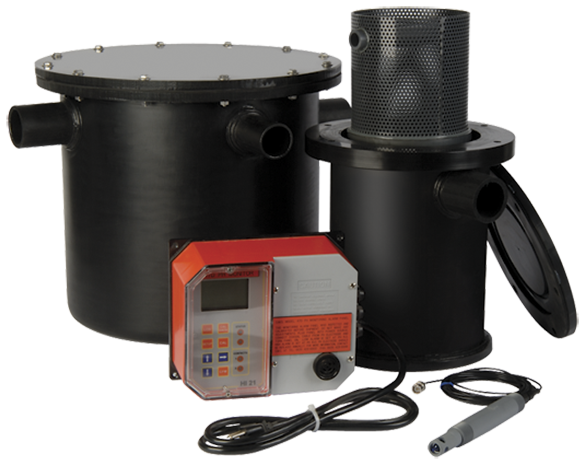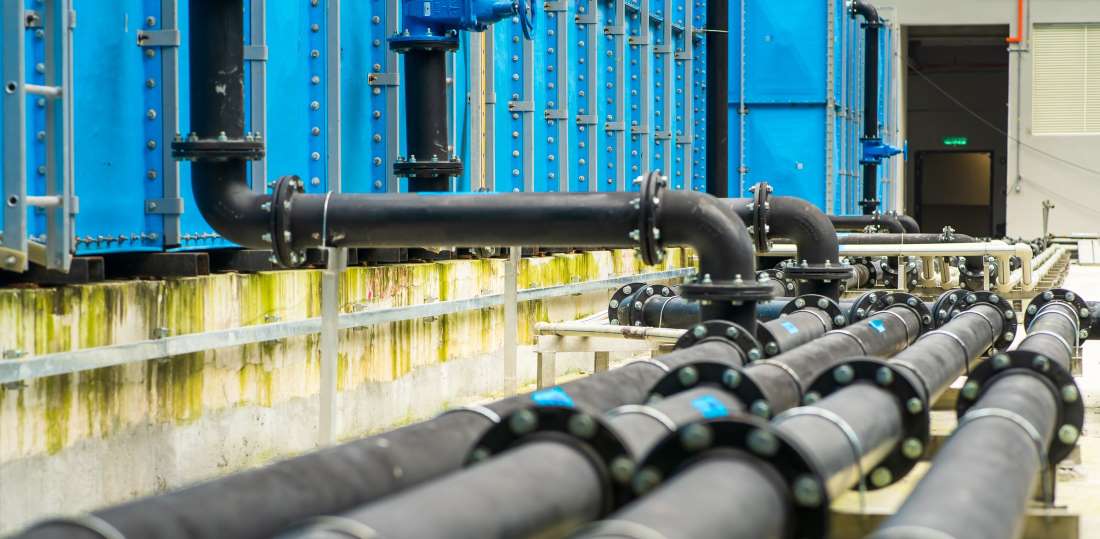Corrosive waste is a type of hazardous waste that can pose significant risks to human health, wildlife, and the environment. It includes acids, bases, oxidizers, and other chemicals that can corrode or dissolve metal, concrete, and other materials. Managing corrosive waste is essential for protecting your employees, neighbors, and the environment from exposure to hazardous substances. It is also critical for complying with building codes and regulations that mandate proper waste disposal and treatment.
In this article, we will explain why managing corrosive waste is so important and explore the need for Building Code compliance, neutralization system sizing, and engineer-designed systems. We will cover the basics of each topic and provide practical tips for implementing these best practices in your facility.
The Importance of Managing Corrosive Waste
Corrosive waste can cause serious harm if not handled, stored, transported, and disposed of properly. It can lead to chemical burns, respiratory problems, and other health issues for people who come into contact with it. It can also contaminate soil, water, and air, leading to long-term environmental damage.
Managing corrosive waste involves several steps, such as:
-
- Identifying the types and quantities of corrosive waste generated in your facility.
- Properly labeling, storing, and handling corrosive waste to prevent leaks, spills, and accidents.
- Transporting corrosive waste in a secure and leak-proof container to a treatment or disposal facility that is authorized to handle hazardous waste.
- Treating corrosive waste using neutralization, oxidation, or other methods that render it less hazardous or non-hazardous.
- Disposing of the treated waste in compliance with local, state, and federal regulations.
By managing corrosive waste effectively, you can reduce the risk of injuries, lawsuits, fines, and environmental damage. You can also demonstrate your commitment to safety and sustainability, which can enhance your reputation and attract more customers.
The Need for Building Code Compliance
Building codes are sets of regulations that govern the design, construction, and operation of buildings and facilities. They aim to ensure public safety, health, and welfare by establishing minimum standards for structural integrity, fire safety, electrical safety, plumbing, and other aspects of building performance.
Building codes also include provisions for managing hazardous materials, including corrosive waste. They require facilities to comply with specific requirements for storing, labeling, transporting, treating, and disposing of hazardous waste. Failure to comply with building codes can result in fines, penalties, and legal liabilities.
To comply with building codes, you need to:
-
- Know the relevant codes and regulations that apply to your facility and operations.
- Hire a qualified professional to design and oversee the installation of waste treatment and disposal systems.
- Obtain the necessary permits and approvals from local authorities.
- Train your employees on the proper handling and management of corrosive waste.
By complying with building codes, you can ensure that your facility is safe, legal, and sustainable. You can also avoid costly penalties and liabilities that could harm your business.
The Importance of Neutralization System Sizing
Neutralization is a common method for treating corrosive waste that involves adding a neutralizing agent to the waste stream to raise its pH level and reduce its acidity. The neutralizing agent can be a base, such as sodium hydroxide, or an acid, such as sulfuric acid, depending on the nature of the waste.
Neutralization system sizing refers to the process of designing and selecting the right type of neutralization system that can handle the volume and composition of your corrosive waste. A poorly designed or undersized system can lead to incomplete neutralization, overflows, leaks, or other problems that can compromise safety and compliance.
The importance of neutralization system sizing lies in:
-
- Ensuring that the system can handle the maximum volume of corrosive waste generated in your facility.
- Choosing the appropriate neutralizing agent and concentration to achieve the desired level of neutralization.
- Providing sufficient mixing, agitation, and retention time to allow the neutralizing agent to react with the waste.
- Preventing the buildup of corrosive gases or solids that can clog the system or cause hazardous conditions.
- Monitoring and controlling the pH level and other parameters of the effluent to ensure compliance with regulatory standards.
To size a neutralization system correctly, you need to:
-
- Know the characteristics and quantity of the corrosive waste you generate.
- Determine the required neutralizing agent and concentration based on the waste’s pH, acidity, and alkalinity.
- Calculate the flow rate, retention time, and volume of the system based on the maximum and average daily waste generation.
- Select the appropriate materials and components for the system, such as tanks, pumps, mixers, sensors, and controls.
- Test the system under various conditions to ensure its efficiency, reliability, and safety.
Should you require further assistance with sizing your Acid Neutralization Tank, or if you would like addition product information please contact a rep in your area.
Related article: Sizing Acid Neutralization Tanks
The Importance of an Engineer-Designed System
An engineer-designed system is a waste treatment and disposal system that is designed, installed, and maintained by a licensed professional engineer. An engineer has the knowledge, skills, and experience to ensure that the system meets the highest standards of safety, efficiency, and compliance.
The importance of an engineer-designed system lies in:
-
- Ensuring that the system meets the specific needs and requirements of your facility and operations.
- Applying the latest engineering principles and practices to design, install, and operate the system.
- Complying with all relevant building codes, environmental regulations, and industry standards.
- Providing a long-lasting, low-maintenance, and cost-effective solution to managing corrosive waste.
- Minimizing the risks of accidents, spills, and environmental damage associated with corrosive waste.
To design an engineer-designed system, you need to:
-
- Hire a licensed professional engineer who specializes in waste management and disposal.
- Provide the engineer with detailed information about your facility, operations, and waste generation.
- Work closely with the engineer to develop a comprehensive waste management plan that covers all aspects of waste handling, storage, transportation, treatment, and disposal.
- Review and approve the engineer’s design, specifications, and drawings before the installation.
- Test and commission the system under the engineer’s supervision to ensure its performance and compliance.
Managing corrosive waste is a critical responsibility for any facility that generates or handles hazardous materials. It requires a comprehensive approach that covers all aspects of waste management, from identification to disposal. Building code compliance, neutralization system sizing, and engineer-designed systems are essential components of a successful waste management program.
By following best practices in managing corrosive waste, you can ensure the safety of your employees, neighbors, and the environment. You should also comply with building codes and regulations, which can help you avoid fines, penalties, and legal liabilities. By investing in the right systems and professionals, you can achieve long-term sustainability and profitability for your business.
Did you know: ATS SpecTool can specify the right acid neutralization product for your specification writing.
Don’t have an account? Click the link below to get started.
We also offer a Complementary spec writing service.
![]()
Share this article





